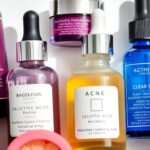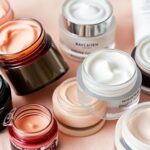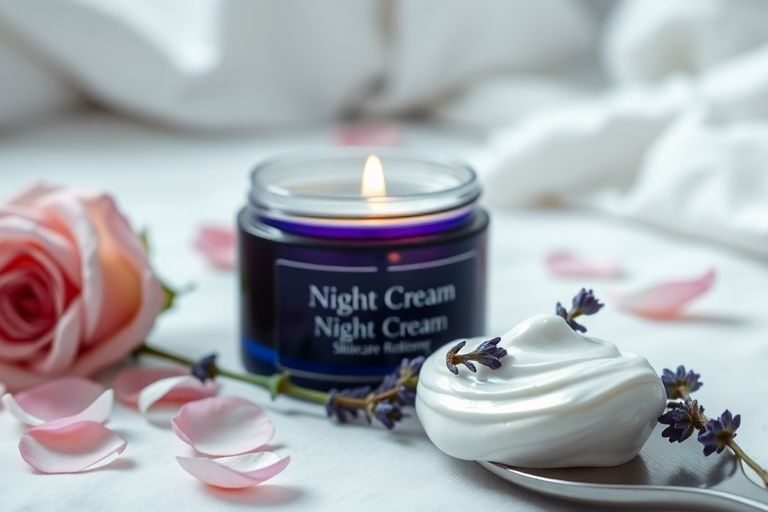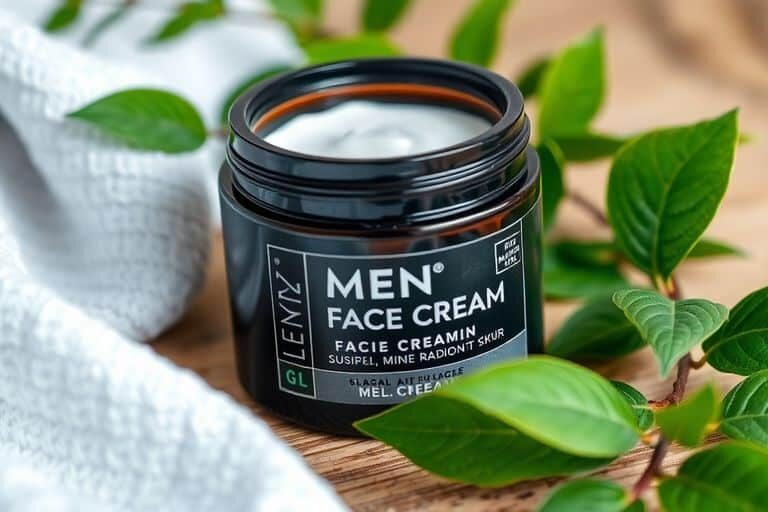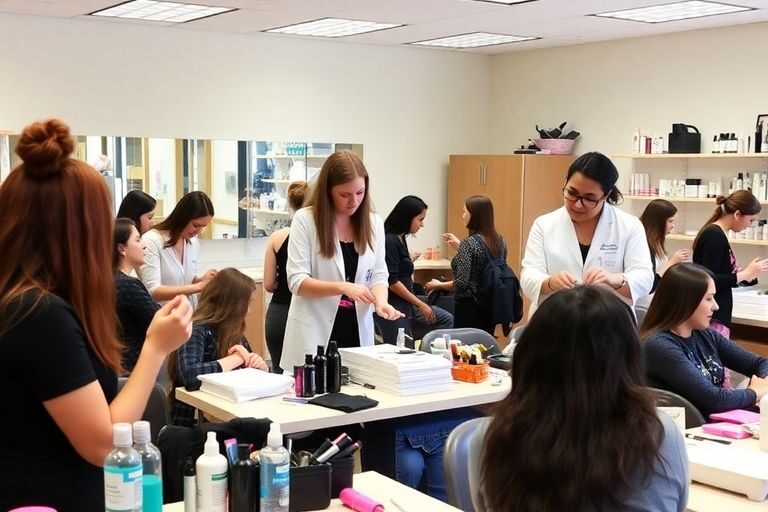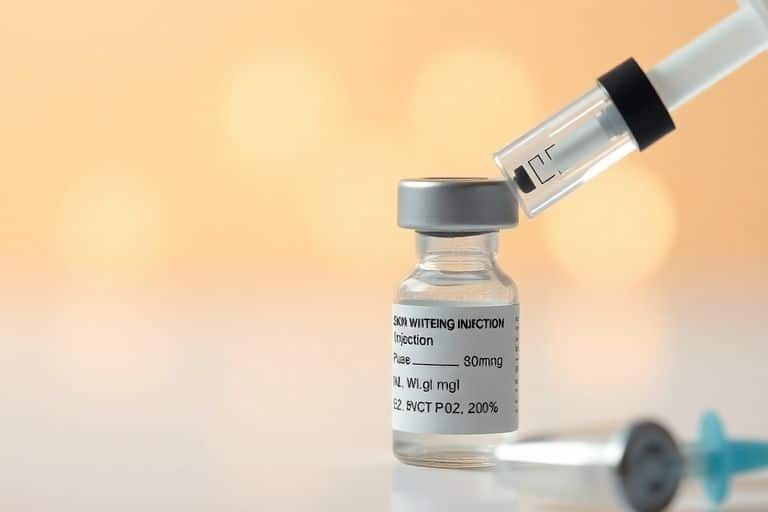Dealing with dry skin can be quite frustrating, especially when it seems like nothing works. If you’ve been battling with dryness, you might be wondering which facial is good for dry skin in parlour settings. Facials can offer more than just a pampering experience; they can provide the hydration and care your skin desperately needs. In this article, we’ll explore the best facials for dry skin and what to look for when choosing a treatment.
Key Takeaways
- Hydrating facials are specifically designed to combat dry skin issues.
- Look for treatments that incorporate ingredients like hyaluronic acid and botanical extracts.
- Consulting with a skincare professional can help tailor treatments to your specific needs.
- Regular facials can enhance your skin’s moisture retention and overall health.
- Choosing the right parlour is essential for effective treatment and care.
Understanding Dry Skin and Its Causes
Dry skin, it’s a pain, isn’t it? We all want that lovely, dewy complexion, but sometimes our skin just decides to be difficult. Before we jump into which facials are best, let’s get a grip on what dry skin actually is and why it happens. Knowing this will help you choose the right treatment and skincare products later on.
What Is Dry Skin?
Dry skin is basically skin that’s lacking moisture. This happens when your skin’s natural barrier isn’t doing its job properly, meaning it can’t hold onto water as well as it should. Think of it like a leaky bucket – the water (moisture) just escapes. This can leave your skin feeling tight, flaky, and generally uncomfortable. It’s more than just a bit of dryness; it’s a sign that your skin needs some serious TLC.
Common Symptoms of Dry Skin
How do you know if you’ve actually got dry skin? Here are a few tell-tale signs:
- Itchiness: That constant urge to scratch? Yeah, not fun.
- Flaky patches: Little bits of skin peeling off. Charming.
- Tightness: Especially after washing your face. Feels like your skin is a size too small.
- Redness and irritation: Dry skin can get inflamed and angry pretty easily.
- Rough texture: Instead of being smooth, your skin feels bumpy and uneven.
Factors Contributing to Dry Skin
So, what causes this moisture-sapping situation? Loads of things, actually. Here are some of the usual suspects:
- Environmental factors: Cold weather, dry air (especially with central heating), and harsh winds can all strip moisture from your skin.
- Harsh products: Some soaps, detergents, and skincare products contain ingredients that can dry out your skin. Basically, anything too strong or with lots of alcohol.
- Underlying skin conditions: Eczema, psoriasis, and dermatitis can all cause dry skin. If it’s persistent, it’s worth chatting with a doctor.
- Ageing: As we get older, our skin produces less oil, making it more prone to dryness.
- Dehydration: Not drinking enough water? Your skin will definitely feel it.
It’s important to remember that everyone’s skin is different. What works for your mate might not work for you. Pay attention to how your skin reacts to different products and environments, and adjust your routine accordingly. If you’re really struggling, don’t be afraid to seek advice from a skincare professional. They can help you figure out what’s going on and recommend the best course of action.
Benefits of Facials for Dry Skin
Facials aren’t just a pampering treat; they can be a real game-changer if you’re struggling with dry skin. I’ve found that regular facials, when tailored to address dryness, can make a noticeable difference in how my skin feels and looks. It’s more than just a surface-level fix; it’s about providing deep care and attention to your skin’s specific needs.
Deep Cleansing and Exfoliation
Dry skin often has a build-up of dead skin cells, which can prevent moisturisers from properly penetrating. Facials gently exfoliate, removing these dead cells and revealing the fresher, healthier skin underneath. This process not only brightens your complexion but also allows hydrating products to work more effectively. It’s like clearing the path for moisture to get where it needs to go. Many facials aim to remove impurities, dirt, and excess oil from the complexion.
Hydration and Nourishment
One of the biggest benefits of facials for dry skin is the intense hydration they provide. A facial with intense hydration is the way to go. Estheticians use products rich in hydrating ingredients, like hyaluronic acid and essential oils, to replenish moisture levels. These treatments go beyond your everyday moisturiser, delivering a concentrated dose of hydration that can leave your skin feeling plump, supple, and revitalised. The hydrating facial treatments work to rehydrate the skin, plump fine lines, and smooth skin’s texture.
Relaxation and Stress Relief
Let’s be honest, life can be stressful, and stress can wreak havoc on your skin. Facials offer a chance to unwind and de-stress, which can indirectly benefit your skin. The massage techniques used during a facial can improve circulation, promoting a healthy glow. Plus, taking some time out for self-care can do wonders for your overall well-being, and that shows in your skin. The experience of a facial massage can be a deeply relaxing and stress-relieving ritual.
Facials are a great way to give your skin the extra care it needs, especially when it’s feeling dry and lacklustre. They’re not a magic bullet, but they can be a valuable addition to your skincare routine, helping to boost hydration, improve texture, and leave you feeling refreshed and rejuvenated.
Recommended Facials for Dry Skin
Alright, let’s get into the good stuff – which facials are actually going to help your dry skin. I’ve tried a few, and these are the ones I’d recommend based on my experience and what the experts say.
Hydrating Facial Treatments
When your skin is screaming for moisture, a hydrating facial is your best bet. These facials are all about infusing your skin with as much hydration as possible. They usually involve a gentle cleanse, exfoliation to get rid of dead skin, and then layers of hydrating serums and masks. The goal is to plump up your skin and leave it feeling soft and supple. A good hydrating facial will often include a massage to help the products penetrate deeper. You can expect to see an immediate improvement in your skin’s texture and overall glow. Make sure they use a moisturising mask!
ZO Ultra Hydration Treatment
If you’re looking for something specifically designed for dry skin, the ZO Ultra Hydration Treatment is worth considering. This facial uses soothing botanical extracts to calm irritated skin and really focuses on restoring your skin’s natural moisture balance. It’s a bit more intensive than a standard hydrating facial, often involving multiple steps and targeted products to address dryness at a deeper level. I found it particularly helpful during the winter months when my skin gets extra parched.
Fire & Ice Resurfacing Facial
Don’t let the name scare you – the Fire & Ice Resurfacing Facial is actually great for dry skin, despite the ‘resurfacing’ element. It uses a combination of warming and cooling sensations to exfoliate and hydrate the skin. The ‘fire’ part is a gentle peel that removes dead skin cells, while the ‘ice’ part uses hyaluronic acid and other hydrating ingredients to soothe and moisturise. It’s a great option if you want a facial that gives you both immediate radiance and long-term hydration. The Fire & Ice Resurfacing Facial Treatment uses high-grade ingredients like moisture-boosting hyaluronic acid, soothing aloe vera and botanical extracts to hydrate the skin and calm irritation.
Finding the right facial can feel like a bit of a treasure hunt. What works for one person might not work for another, so it’s all about experimenting and finding what your skin loves. Don’t be afraid to ask your aesthetician questions and let them know about any sensitivities or concerns you have.
Key Ingredients to Look For
When I’m choosing products for my dry skin, I always pay close attention to the ingredients list. It’s like reading a recipe – you want to make sure you’re using the right stuff to get the best results. Here are a few key ingredients that I’ve found make a real difference.
Hyaluronic Acid
Hyaluronic acid is a total game-changer for dry skin. It’s basically a moisture magnet, drawing water from the air and locking it into your skin. I’ve noticed a huge difference in how hydrated my skin feels since I started using products with this ingredient. It’s like giving my skin a big drink of water.
Botanical Extracts
I’m a big fan of botanical extracts because they’re often packed with antioxidants and other good-for-you stuff. Things like aloe vera, chamomile, and green tea extract can be super soothing and help to calm irritated skin. Plus, they often have anti-inflammatory properties, which is a bonus.
Essential Oils
Essential oils can be a bit of a mixed bag, but some of them are fantastic for dry skin. I particularly like using products with rosehip oil, lavender oil, or sandalwood oil. They can help to nourish the skin and leave it feeling soft and supple. Just be careful if you have sensitive skin, as some essential oils can be irritating. Always do a patch test first! Remember to check out dry skin products for more options.
It’s worth noting that everyone’s skin is different, so what works for me might not work for you. It’s all about experimenting and finding the ingredients that your skin loves the most.
Consulting with a Skincare Professional
Importance of Personalised Treatments
Look, I’m all for DIY skincare and trying things out myself, but when it comes to facials, especially for dry skin, seeing a professional is a game-changer. Everyone’s skin is different, and what works for your mate might not work for you. A skincare pro can properly assess your skin type, identify specific issues, and tailor a treatment plan that’s just right for you. It’s like getting a bespoke suit instead of something off the rack – it just fits better.
What to Expect During a Consultation
So, what happens when you actually go for a consultation? Well, first off, they’ll probably ask you a bunch of questions about your current skincare routine, your lifestyle, and any skin concerns you have. They’ll also take a close look at your skin, maybe even use some fancy gadgets to analyse it. Don’t be shy about telling them everything – the more info they have, the better they can help. They might discuss different facial treatments and explain what each one involves, what ingredients they’ll use, and what results you can expect. It’s a good chance to ask any questions you have and make sure you feel comfortable with the plan.
Follow-Up Care and Maintenance
Getting a facial is great, but it’s not a one-time fix. To really see long-term improvements, you need to follow up with a good at-home skincare routine and maybe even schedule regular facial appointments. Your aesthetician will give you specific instructions on how to care for your skin after the facial, including what products to use and what to avoid. They might also recommend lifestyle changes, like drinking more water or getting more sleep, to help keep your skin hydrated and healthy. Think of it as a team effort – they’re the experts, but you’re the one who needs to put in the daily work to maintain those results.
It’s important to remember that consistency is key when it comes to skincare. Don’t expect to see dramatic results overnight. It takes time and effort to improve your skin’s health and appearance. But with the right professional guidance and a solid at-home routine, you can definitely achieve the radiant, hydrated skin you’ve always wanted.
At-Home Care for Dry Skin

Even with the best parlour treatments, what I do at home makes a massive difference to my skin. Think of it as maintaining the results and giving my skin the ongoing TLC it needs. It’s all about consistency and using the right stuff.
Daily Skincare Routine
My daily routine is pretty simple, but I stick to it religiously. It’s the foundation for keeping my dry skin happy. Here’s what I do:
- Cleansing: I use a gentle, hydrating cleanser. Harsh soaps are a no-go because they strip away natural oils. I look for something with ceramides or glycerin.
- Toning: I skip toners with alcohol. Instead, I use a hydrating mist or a very gentle toner to balance my skin’s pH.
- Serum: This is where I pack in the moisture. A hyaluronic acid serum is my best friend. It draws moisture into the skin and keeps it plump.
- Moisturising: I use a rich, creamy moisturiser, morning and night. In the winter, I might even layer on a facial oil on top for extra protection.
- Sunscreen: Even on cloudy days, sunscreen is a must. I use a broad-spectrum SPF 30 or higher. Sun damage makes dryness worse, so this is non-negotiable.
Recommended Products
Finding the right products can be a bit of trial and error, but here are some ingredients and product types I’ve found helpful:
- Hyaluronic Acid Serums: These are moisture magnets. I apply them to damp skin to lock in hydration.
- Ceramide Creams: Ceramides help to repair the skin’s barrier, preventing moisture loss. Dry skin loves them.
- Facial Oils: Oils like rosehip, argan, and jojoba are great for sealing in moisture and providing extra nourishment. I use them at night.
- Hydrating Masks: I use a hydrating mask once or twice a week for a moisture boost. Sheet masks or creamy masks work well.
- Gentle Exfoliants: Exfoliating once a week helps to remove dead skin cells, allowing moisturisers to penetrate better. I avoid harsh scrubs and opt for a gentle chemical exfoliant like lactic acid.
Lifestyle Changes for Better Skin
It’s not just about what I put on my skin, but also how I treat my body overall. These lifestyle tweaks have made a noticeable difference:
- Hydration: I drink plenty of water throughout the day. Staying hydrated from the inside out is key.
- Humidifier: Especially in winter, a humidifier in my bedroom helps to combat dry air and keep my skin moisturised overnight.
- Diet: I try to eat a balanced diet rich in healthy fats, like avocados and nuts. These fats help to keep my skin supple.
- Avoid Hot Showers: Hot water strips away natural oils, so I keep my showers short and lukewarm.
- Gentle Patting: After washing my face, I gently pat my skin dry instead of rubbing it. This prevents irritation.
Taking care of dry skin at home is a marathon, not a sprint. It’s about building a consistent routine and making small changes that add up over time. Don’t get discouraged if you don’t see results overnight. Just keep at it, and your skin will thank you.
Choosing the Right Parlour for Your Facial

Finding the right place for your facial is just as important as choosing the right treatment. You want to make sure you’re in safe hands and that you’ll get the results you’re hoping for. Here’s how I go about picking a parlour:
Researching Local Options
First things first, I start by looking at what’s around. I usually check online reviews and ask friends for recommendations. It’s good to get a feel for the reputation of different parlours before you even think about booking anything.
- Online Reviews: Sites like Google, Yelp, and Treatwell can be goldmines. Pay attention to both the good and bad reviews, and see if there are any recurring themes.
- Word of Mouth: Ask your friends, family, or colleagues if they’ve had good experiences anywhere. Personal recommendations are often the most reliable.
- Social Media: Check out the parlour’s social media pages. Are they active? Do they post before-and-after photos? This can give you a sense of their work.
Questions to Ask Your Aesthetician
Before you commit to a facial, it’s a good idea to have a chat with the aesthetician. This gives you a chance to discuss your skin concerns and make sure they understand what you’re looking for. Here are some questions I always ask:
- What experience do you have with top facials in London for dry skin?
- What products do you use, and are they suitable for sensitive skin?
- Can you explain the steps involved in the facial, and what results can I expect?
- Do you have any before-and-after photos of clients with similar skin types?
It’s important to feel comfortable and confident with your aesthetician. If they seem dismissive or don’t answer your questions clearly, it might be a sign to look elsewhere.
Understanding Treatment Costs
Facials can range in price, so it’s important to know what you’re getting for your money. Don’t be afraid to ask for a breakdown of the costs, and be wary of parlours that seem suspiciously cheap. Remember, you often get what you pay for.
- Price Comparison: Get quotes from a few different parlours to see what the average cost is in your area.
- Package Deals: Some parlours offer package deals, which can be a good way to save money if you plan on having multiple treatments.
- Hidden Costs: Ask if there are any additional costs, such as for extractions or add-on treatments.
Ultimately, choosing the right parlour is about finding a place where you feel comfortable, confident, and well-informed. Take your time, do your research, and don’t be afraid to ask questions. Your skin will thank you for it!
Final Thoughts on Facials for Dry Skin
In conclusion, if you’re battling dry skin, a facial can be a game changer. With the right treatment, you can boost hydration, smooth out rough patches, and give your skin a fresh glow. Remember, not all facials are created equal, so it’s important to chat with your skincare professional about your specific needs. They can guide you to the best options, whether it’s a hydrating facial or something more tailored. Don’t hesitate to explore these treatments and find what works for you. Your skin deserves it!
Frequently Asked Questions
What causes dry skin?
Dry skin can be caused by many factors, such as weather changes, hot showers, harsh soaps, or not drinking enough water.
How can facials help with dry skin?
Facials can provide deep cleansing, exfoliation, and hydration, which helps to remove dry patches and boost moisture in your skin.
What should I look for in a facial for dry skin?
Look for facials that include hydrating ingredients like hyaluronic acid, soothing botanical extracts, and nourishing oils.
Are there specific facial treatments recommended for dry skin?
Yes, treatments like the ZO Ultra Hydration Treatment and Fire & Ice Resurfacing Facial are great options for dry skin.
How often should I get facials for dry skin?
It is generally recommended to get a facial every 4 to 6 weeks, but this can vary based on your skin’s needs.
What can I do at home to help dry skin?
At home, use a gentle cleanser, moisturise regularly, and consider using a humidifier to add moisture to the air.

